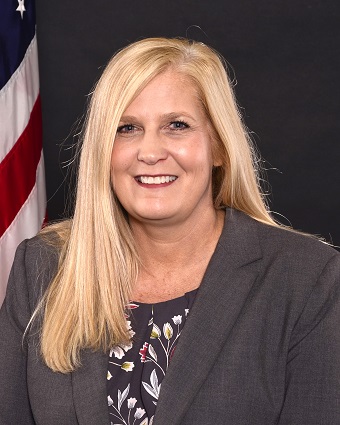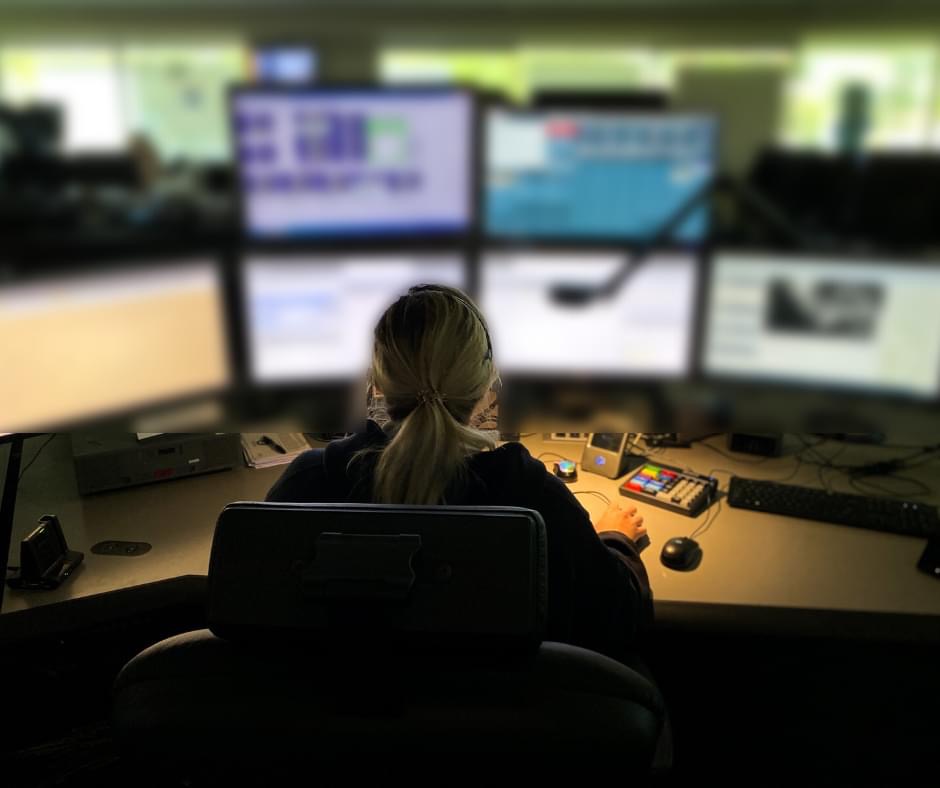Communications

Kelly Allred, Emergency Communications Center Manager
Communications Section
(661) 861-3110

The Communications Section serves as a vital link between the public and delivery of law enforcement services. Often referred to as the window to the Kern County Sheriff’s Office, the Communications Section is generally the first contact the public will have with the department. When you call the Kern County Sheriff’s Office, you will speak with a highly trained Sheriff’s Dispatcher, whose mission is to provide the highest level of quality service. They are trained to assist all callers and law enforcement field personnel and are responsible for the deployment and coordination of resources for both emergency and non-emergency requests for assistance.
The Communications Section has the responsibility to staff and answer, on a 24-hour basis, the telephones (landline and cellular) upon which calls and text messages for service are received. This includes 911 emergency calls (police, fire, and paramedic). The Communications Section handles only law enforcement related calls for the unincorporated areas of Kern County and the incorporated cities Wasco and Maricopa. When a 911 call for the Fire Department is received, the caller is transferred to the Fire Department. Each year over 250,000 incidents are logged on the "Computer Aided Dispatch System" at the Sheriff's Communications Center, and nearly 600,000 emergency, non-emergency telephone and text message transactions take place.
The Communications Section serves as the Emergency 9-1-1 Public Safety Answering Point for the unincorporated areas and contract cities (Wasco and Maricopa) of Kern County. Our mission is to improve the quality of life for the residents and visitors of Kern County. This mission is accomplished through the reception and dissemination of information for the purpose of keeping the peace, rendering aid to the public, aiding in the apprehension of law violators and all other tasks that enable the Sheriff to fulfill his statutory and constitutional duties. In addition to Sheriff’s Office personnel, the Communications Section dispatches for Stallion Springs Police Department, Bear Valley Springs Police Department, Kern County Parks Department, Kern County Probation, after hours for Kern County Animal Control and multiple other state and federal law enforcement agencies while they are in Kern County.
Whether you call to report an emergency or not, we will respond to you as quickly and effectively as possible. Calls that come into the Communication Center are immediately prioritized. Life threatening calls that involve a threat to someone’s personal safety are “Priority 1” calls. When an emergency call comes to the Communication Center, a call taker immediately starts gathering the information and notifies the dispatcher so that deputies can be quickly dispatched to the scene. The call taker then continues to gather information to better assess the situation. This updated information is then used to coordinate deputies responding to the call. It is important to know that answering questions does not delay our response. The deputies receive the call simultaneously on their police radio and in-car computer.
Equipment including radios, cellular telephones, and computers enable reliable communication from every point of the county. All the communication devices are meaningless without the abilities and skills of the Sheriff's Dispatchers and Dispatch Assistants. Dispatching requires patience, compassion, common sense, quick-thinking and the ability to react under pressure, among other traits. Their job is perhaps the most technically demanding job within the Sheriff's Office due to these employees handling the Emergency 9-1-1 system and maintaining radio communications with field units. Work is performed under the general direction of a Dispatch Supervisor. Most positions require shift, holiday, and weekend work.
MISSION, VISION, VALUES
MISSION STATEMENT
The mission of the Kern County Sheriff’s Office Communication Section is to provide quality public safety communications service.
VISION
In keeping with our mission, the Communications Section will strive to be a reliable and professional source of assistance and information in the eyes of the public, law enforcement officers and our peers by:
- Ensuring a positive experience with our department.
- Assisting people in crisis.
- Providing accurate, timely, and vital information.
- Assuming a leadership role in the field of law enforcement communications.
VALUES
To achieve our vision, the section must:
- Provide the highest quality service possible.
- Promote the professional development of our personnel.
- Work efficiently as a team.
- Optimize employee job satisfaction.
- Be sympathetic to those in crisis.
- Provide a clean, safe working environment.
- Establish a “learning environment” through continuous on the job and classroom training.
WHAT IS 9-1-1?
9-1-1 is an emergency phone number anyone can dial on any phone in a serious or life-threatening emergency to be connected with law enforcement, fire, medical and ambulance services. A 9-1-1 call is free from all phones, including pay phones.
When you call 9-1-1, a professionally trained dispatcher answers your call. The dispatcher will ask the location of your emergency, nature of your emergency and will dispatch the appropriate resource.
CALL 9-1-1 FOR SERIOUS EMERGENCIES
Emergencies include a crime that is in progress or about to happen, and crimes that have resulted in serious physical injury, property damage or property loss. By calling 9-1-1 you will be directed to the appropriate law enforcement, fire or medical aid services. When reporting a crime or incident that does not justify dialing 9-1-1, call your local law enforcement agency. Within the unincorporated areas of Kern County, Wasco, or Maricopa, dial (661) 861-3110, or 1-800-861-3110.
EXAMPLES OF 9-1-1 EMERGENCIES:
- In Progress fights, sexual assaults, etc.
- Homicides
- Burglaries and robberies
- Domestic violence
- Child/elder abuse
- Fire
- Medical conditions, such as a possible heart attack, injuries from a fall, bleeding that cannot be stopped
- Missing children
- A person who is missing and requires special care; needs medication, or has Alzheimer’s disease, etc.
- Sounds of gunshots, screaming, explosions, breaking glass, alarms, etc.
- Vandalism in progress
- Possible or actual kidnappings
- Auto theft in progress
- Hit and run accidents
- Suspicious subjects loitering near schools or parks, or looking into parked vehicles
- Subjects drunk in public
- Subjects exhibiting unusual mental or physical symptoms
EXAMPLES OF NON-EMERGENCY CALLS:
- Burglaries to a home or business in which the suspect has already left the scene
- Open or broken doors or windows to a business or residence, especially if the business is closed or the residents are away
- Loud parties
- Minors violating curfew
- Auto theft with no suspect information
- Missing persons who do not need special care
- Disturbing the peace
- Soliciting without a license
WHAT HAPPENS WHEN I CALL?
When you dial 9-1-1 from a regular (landline) phone in California, the dispatcher will, in most cases, receive the address and phone number you are calling from on their computer. The dispatcher will ask for the location of the emergency; in case you are calling from a location different than the emergency. The dispatcher can begin to send help while you are still answering questions, so stay on the phone and remain calm. This will help the dispatcher gather the information they need to best help you.
If a crime has taken place, you can help deputies by remembering suspect information. The dispatcher will ask if the suspect was male or female, the age, race, the color and type of clothing they were wearing; whether they had any scars, tattoos or piercings, and the color, make, and model of the suspect’s car or truck; this could include the license plate number or any part of it. The dispatcher will also ask if you saw the suspect carrying or using any weapons. Let the dispatcher know any other information you might know about the suspect that could be helpful.
CELLULAR/VOIP 9-1-1 CALLS:
When you dial 9-1-1 from a cellular phone (mobile phone) in California, the dispatcher will not receive the exact address you are calling from. They will receive an “estimated” location based on the signal from your wireless phone. It is important to stay on the phone and tell the dispatcher where the emergency is occurring. The dispatcher may not be able to send help until an exact location is determined.
When you dial 9-1-1 from a Digital or VOIP (internet based) device, the dispatcher may receive an incorrect address, or may not receive an address at all. It is important to stay on the phone and tell the dispatcher where the emergency is occurring.
TEXT MESSAGE TO 9-1-1
When you text 9-1-1 from a cellular phone, you may not reach the correct agency you need. Just like a 9-1-1 call from a cellular phone, make sure you give the location of the emergency first, as the location that comes with your text message is an estimated location. Also, remember to NOT use abbreviations and try and spell words correctly. Not everyone uses the same abbreviations. There could be a delay in help when a dispatcher is attempting to figure out the true meaning of abbreviations and misspelled words. Use Text to 9-1-1 when you are unable to safely make a voice 9-1-1 call.
SPEECH OR HEARING IMPAIRED
If you use a text telephone (TDD, TTY), make sure you know the correct way to dial 9-1-1 on your machine. After dialing 9-1-1, tap several letter keys (or the space bar) on the keyboard then wait several moments. Repeat this procedure until the dispatcher answers. There may be a short delay while a text telephone is added to the call. Do not hang up. When the dispatcher answers, type your address and the emergency situation.
NON-ENGLISH SPEAKING?
In California, 9-1-1 dispatchers are able to add translators, who speak over 200 different languages to the call. If you do not speak English or only speak limited English, tell the dispatcher that there is an emergency and which language you speak. For example, say, "Emergency. I speak Spanish." There may be a short delay while the dispatcher connects the call with a translator. Do not hang up.
TEACH YOUR CHILDREN TO DIAL 9-1-1 PROPERLY:
Make sure your children understand that they should call 9-1-1 when something very serious is occurring and an adult is not able to take care of the situation. Ensure your children know their address and phone number.
TIPS TO REMEMBER:
- If you can, get to a safe place before calling. If there is a fire, get out first.
- Post your address near the phone.
- 9-1-1 is never to be used for a prank or joke. It is a crime to call 9-1-1 without an emergency and you may prevent or postpone assistance to someone who really needs help.
- If you call 9-1-1 accidentally, stay on the line and let the dispatcher know it was a misdial or an accident. It is the policy of the Kern County Sheriff’s Office to send a deputy to check a residence or business from which a 9-1-1 call was placed, and no contact was made with the caller.
JOIN US
Join our team! Apply at (jobs-public-regular.asp)
What to expect in training:
- 6 weeks of classroom training
- 3 weeks of state mandated POST training
- 16-20 weeks of individual training on the floor
- Ride-along with a patrol unit for one or more shifts
- Sit-along with a dispatcher at an allied agency such as Fire Dept or CHP
OTHER OPPORTUNITIES AVAILABLE
Opportunities are available for dispatchers to participate in other areas of the Kern County Sheriff’s Office: Tactical Dispatchers work with SWAT, Search and Rescue and are available for special assignments such as Multi-Agency task force sweeps. Dispatchers and Dispatch Assistants assist with the training of outside agencies such as Probation and Parks Department on radio procedures. Dispatchers are also members of the Critical Incident Stress Management (CISM) team. CISM provides a forum for emergency services personnel to discuss high priority events. Dispatchers participate in community events. Dispatchers are members of the Recruiting Team and travel throughout the state attending different forums of recruitment from Career Days at College/High Schools to large recruitment seminars.
